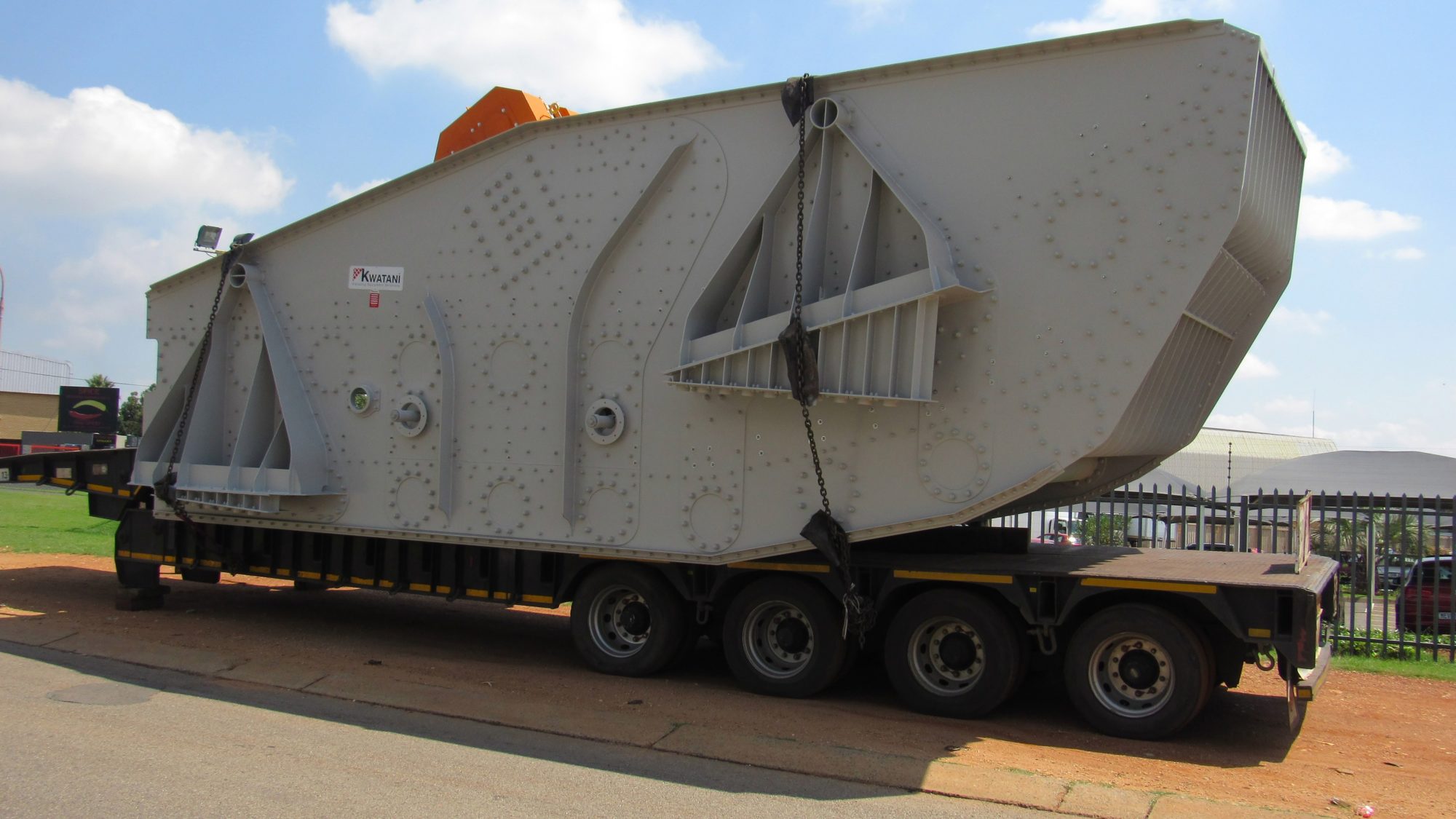Numerical simulation research that modelled the behaviour of particles on a conventional banana screen has been leveraged by local vibration screen specialist Kwatani to make fundamental improvements in the design. So important were Kwatani’s adaptations that they were able to double the throughput of a competitor’s problematic dewatering screen on a customer’s mine, where excessive water carry-over was limiting production potential.
According to Kwatani Chief Operating Officer Kenny Mayhew-Ridgers, the company’s depth of mechanical and metallurgical expertise underpins its ability to apply what it learns from research and field testing. “This specific research, which was done by Australia’s Commonwealth Scientific and Industrial Research Organisation (CSIRO) and the University of Queensland, highlighted that the traditional feed-end slopes of banana screens were generally too steep,” says Mayhew-Ridgers. “At around 34°, these slopes create material velocity in excess of 3 m/s – too high for efficient screening.”
He considers that a more suitable slope at the feed end is 25°, leading into five or six deck slopes in the screen and ending with a discharge slope of just 5° or even 0°. This would ensure that the material velocity was less than 0.5 m/s at the discharge end. The drive angle, operating speed and stroke are also significant factors, he says.
“Our analysis allowed us to address a challenge that a customer was experiencing with their degrit screens,” he says. “Water carry-over from the screen to the conveyor belt was limiting throughput to only 250 t/h, and the mine needed more than that.”
Kwatani’s changed the screen feed-end slopes and incorporated a long discharge-end decline slope of 3°. The drive angle was also increased to 50° to improve the dewatering performance of the screen. These adaptations were possible within the constraints of existing chute work, motor base position and support structure. The size of the screen – measuring 3.66 m wide – meant that a considerable load needed to be supported on the screen deck, so circular hollow sections provided improved strength in place of the H-profile deck beams usually employed.
“The modifications were successful,” he says. “The mine’s plant manager was able to confirm that the feed rate had been increased to 500 t/h with very little water carry-over, and this performance was consistently maintained.”
The application of the new design was outlined in a peer-reviewed paper by Mayhew-Ridgers and Kwatani Director Derrick Alston, which was presented at an international mineral processing conference.











